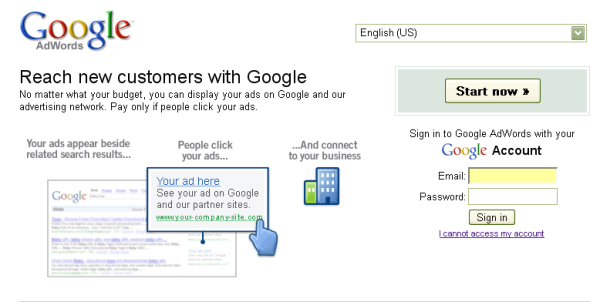What Does Google Adwords (Pay Per Click) Cost? The Main Factors...

As a business owner who is already interested in setting up a Google Adwords/PPC (Pay Per Click) campaign, you might already be aware of the great benefits it can bring to your online marketing efforts. Essentially, Google Ads provide a fast, flexible and profitable way of placing your business on Google and winning conversions.
But to get optimum results, how much should you be paying exactly?
JDR Group is a “Google Partner Agency with expertise in PPC. This article will take you through the main influences on the cost of PPC; ensuring you get better ranking positions and traffic flow without spending more on clicks than you can afford!
The concept of a PPC campaign is based on 2 main things:
▪ attracting people who are relevant to your advertising offer
▪ only paying when people click through to your landing page/website
It can be calculated as: Cost per click (CPC) = Advertising cost ÷ Ads clicked.
When Google sets CPC, one of the questions they have in mind is: How effective is this advertisement at grabbing the attention of potential customers and converting to sales/actions? CPC is usually higher as the ads become more relevant and attracts valuable customers to your landing page.
However there are many ways of keeping your PPC campaigns manageable, at prices you can afford. The key factors are explained below:
1) How much your competitors are paying
Google Adwords works on a real-time bidding auction for clicks on any given keyword. For example, if you want your ad to appear when someone searches for the phrase 'blue widgets', then you bid a maximum price that you are prepared to pay per click. When someone does that search, Google compares all of the advertisers who are bidding on that keyword at that particular time, and will give the highest positions to the highest bidders.
Generally speaking, the more popular keywords will cost more per click as when more people are bidding, the prices are pushed up.
You can find out average spending on certain keyword using Google’s Traffic Estimator Tool.
As a word of warning, it’s not advisable to choose keywords with too many other affiliates bidding on them. Google doesn’t like this and can lower your Quality Score (more on this later).
2) How many clicks the keywords/phrases are getting
Google Adwords is a pay per click marketing system - so the more 'clicks' you get, the more you will pay overall. The good news is that you can cap your daily budget so that you will not exceed a certain level of spend.
Writing good ads which are relevant to the keywords you are bidding for will mean you get more clicks.
This is measured as your Click Through Rate (CTR), which measures the percentage of customers are clicking on your ads (compared to how many times it has been shown) and going to the landing page on your website.
CTR of ads can be improved by making sure keywords are used in the headline along with clear, relevant, enticing features and benefits. Although this means you will be paying for more clicks, Google will give your business more exposure by placing the ad higher in the search rankings.
To improve your CTR and conversion rates, split-testing ads and using negative keywords can eliminate those which are underperforming, cutting your PPC spend - this is one of the reasons why it is well worth having a professional company look after your campaign for you.
3) Quality Score
Quality Score (QS) is Google’s way of regulating the cost of PPC campaigns. It also determines how often your ad is shown when the keywords are typed in, at what page position, by rating each keyword in your campaign on a scale of 0-10 (10 being highest). If QS is high, you benefit from lower cost per click, higher ranking position and higher impression share (ads shown more often).
How you can achieve higher QS scores:
- Better CTR of ads and keywords in your account and use of negative keywords
- Better CTR compared with competitors
- Improve the relevance and quality of your landing page
- Repeated use of keywords in the ad
- Useful, relevant, clear, and compelling headline plus features and benefits in the ad
- Relevant, clear display URL and domain name in ad
- Clear, simple call to action
Quality Score doesn’t just stop at your ads. JDR offer free website critiques and marketing audits where we report on the QS of your entire website, as well as other areas, including social media marketing and web design.
4) Visitor Value
PPC ads are designed to attract valuable visitors to your website landing pages, so when considering the cost of Google Adwords, also consider what you'll get from it in terms of new sales. And this can be measured in terms of Visitor Value.
Visitor Value = total revenue (the total value of sales you get from your Adwords marketing)÷ total visitors.
Valuable visitors will be more likely to communicate with you and convert to sales/actions, as they are better suited to your business offer. Ultimately, if clicks are worth more you can afford to spend more on PPC, get a higher ranking and more traffic opportunities.
You can increase visitor value by split testing your ads according to specific interests, intent, locations and the time of day that your ads are shown (you can do this using Google Ad Scheduling). By understanding customers’ needs and decision-making processes, they are likely to stay longer on your landing page and – most importantly – buy before leaving.
JDR enables you to easily keep on top of your conversions too, with our free conversion rate checklist.
photo credit: cambodia4kidsorg via photopin cc


